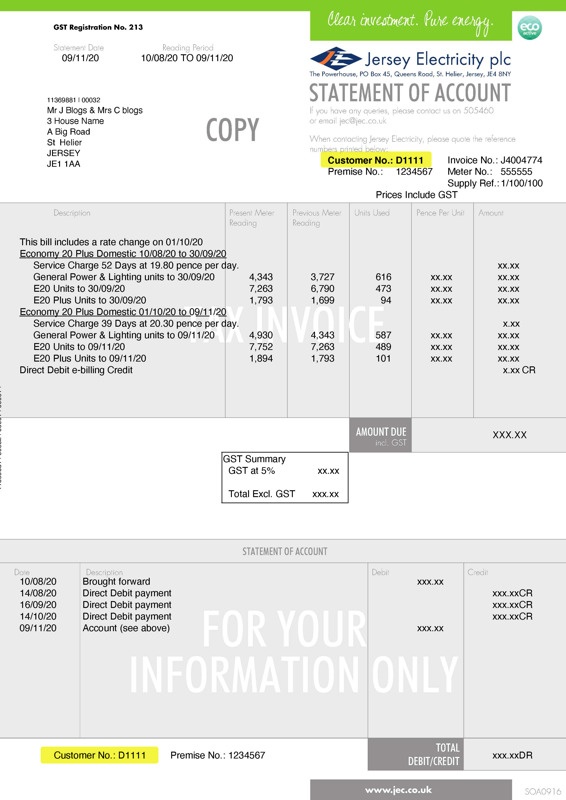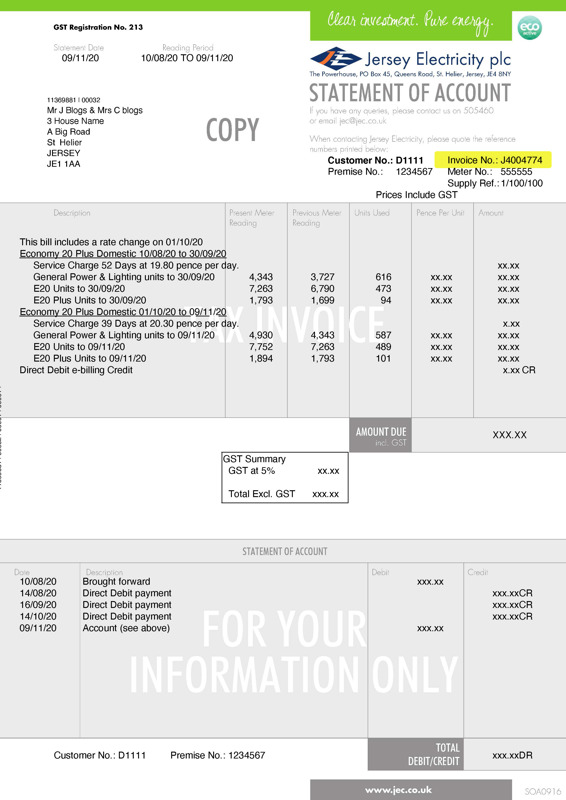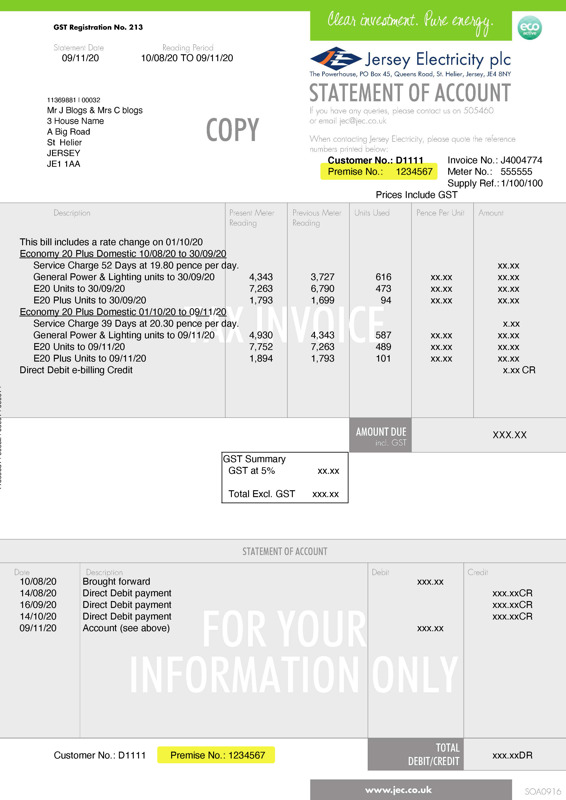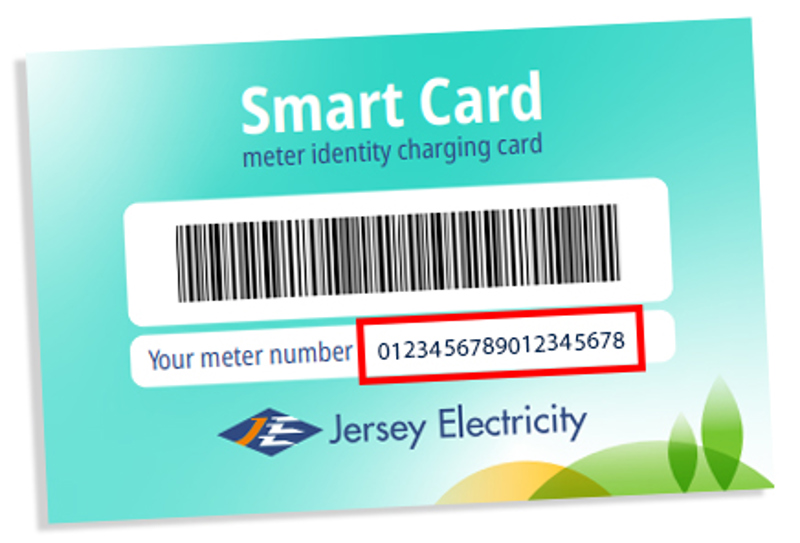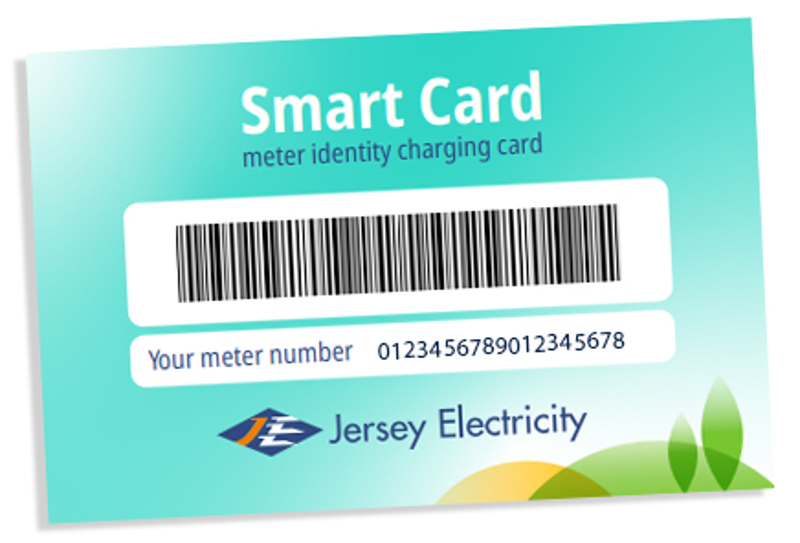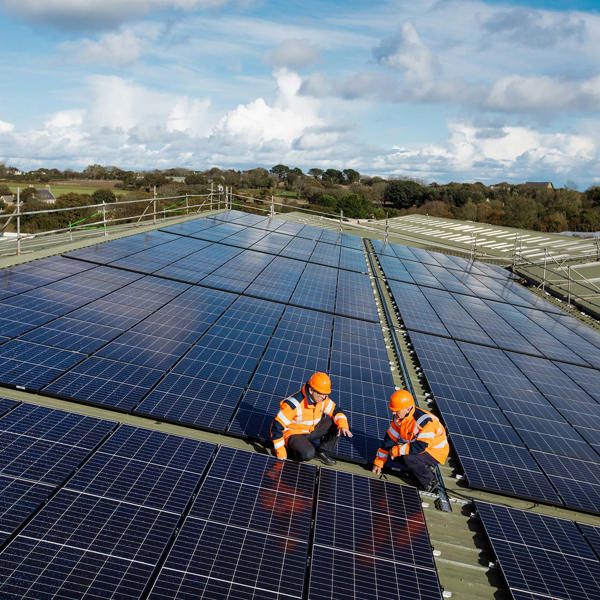
Why we support local renewables
The Government’s declaration of a climate emergency in May 2019 prompted renewed calls from Islanders for more locally generated renewable power such as wind, solar and tidal.
We listen carefully to our customers and understand there is a desire for Jersey to be more energy independent by increasing the level of on-Island renewable electricity generation.
Jersey Electricity fully supports these ideas, and we are excited about how renewable technology will enhance Jersey’s future energy supply.

Greater use of wind, solar and tidal will not reduce our carbon emissions
Perhaps surprisingly though, greater use of wind, solar and tidal electricity generation will not reduce the carbon emissions of Jersey’s grid. In general, renewables will displace Jersey’s imported low carbon electricity with locally generated low carbon electricity.
That said, there may be other reasons for investing in renewables, such as for energy independence or to support the local economy, and we have been working hard to find ways to reduce their cost.

Local renewables have a part to play
Jersey Electricity has been assessing large scale renewables for many years. We have worked hard to deliver an energy platform that reliably provides ‘on-demand’ low carbon power when the Island needs it.
And we have designed Jersey’s electricity grid to be compatible with the integration of local renewables which are intermittent and therefore need on-demand imported power to supplement them.
Working together on cost and security
We want to make the integration of local renewables affordable while not jeopardising network stability and supply reliability. We also want it to benefit the whole community in a fair, equitable way.
That means working with partners, including Government and local businesses to make local renewable energy more cost-effective and more secure than alternative imported power.
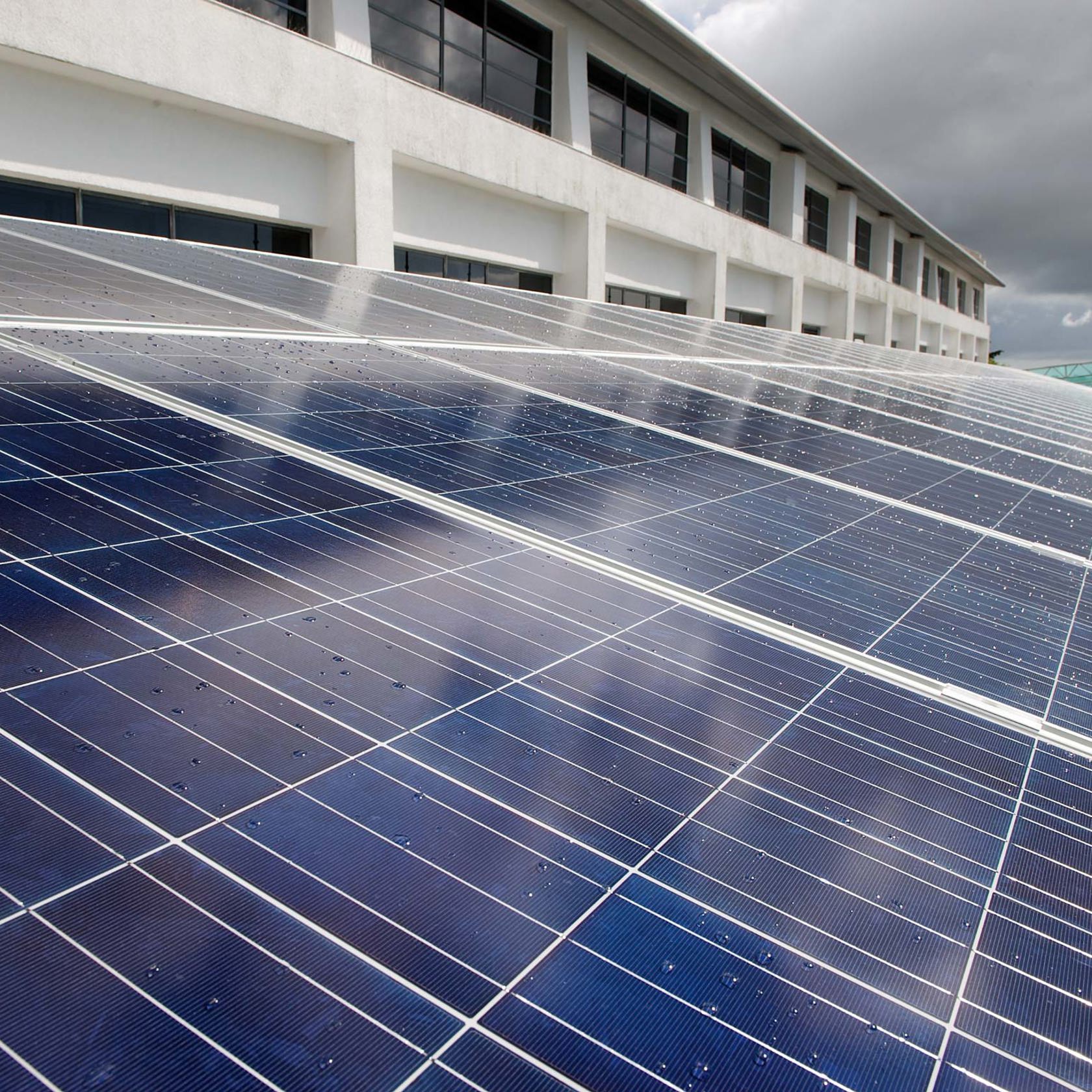
- We installed our first array on the Powerhouse roof in 2013 and analysed its performance for some time.
- We installed an 81kWp array on the Power Station in June 2019, which at the time of construction was the largest in the Channel Islands.
- We have surpassed this with a 255kWp on a Trinity farm warehouse roof, and a 553kWp array on Jersey Dairy’s roof, which is now the largest in the Channel Islands.
- We’ve installed the Island’s first car-port, complete with EV charging, to form a Solar Hub at Queen’s Road.
- Together, these arrays were generating almost one million kWhs a year by February 2021
- We are looking at ground-based solar on unproductive land
- We’re in talks with over 25 other businesses and landowners to unlock further solar PV installations by offering to buy that power at a fair, unsubsidised price.
Solar PV suits us well
Local solar PV is already contributing to the grid, and this the more cost-effective renewable option for Jersey. It is still more expensive to produce than buying low-carbon power from France, hence our objective to reduce the cost as much as possible.
Click more for details of our Solar PV array projects.

Although the cost of offshore wind in the UK and Europe is reducing, it cannot currently compete with the hydro and nuclear power we buy from EDF.
For example, the 500MW St Brieuc development in France has been approved with a €150/ MWh subsidised price from the French Government. This is more than twice what we pay today for imported power bearing in mind we still have all the same infrastructure distribution and other costs we bear with imported power.
Local offshore wind cannot compete with the price of imported power
Customers have told us that price is critically important. The impact on electricity prices of building new offshore wind or tidal power installations in a jurisdiction of Jersey’s size is significant. This impact is due to the current cost of technology available, absence of Government subsidy and low cost of our existing imported power.
Jersey tidal power would cost four times current prices
In 2019/20, 36% of our imported electricity was from EDF’s tidal power plant on the estuary of the Rance River in Brittany. We know this because the power is certificated, which means we know its source through regular reports from EDF. Jersey, therefore, already benefits from renewable hydropower.
We estimate the cost of developing and producing power from Jersey waters to be currently around four to five times higher than the price at which we import from France. The reason is that it is costly to build tidal farms. They are new and risky for developers who price that in. For sure, these facilities can be built; however, retail prices in Jersey would have to go up significantly to pay for them.
We have been following innovation in tidal power for many years. In 2011, we witnessed the trial of EDF’s two prototype 2MW tidal turbines in Brittany. These turbines were intended to form part of a tidal farm of four such turbines. Unfortunately, the two trial turbines were removed from the seabed in 2017 for repairs and never redeployed.
At the cost of around €40million, the 8MW tidal farm, had it been completed, would have powered just 2.4% of the Island’s annual consumption (circa 15GWh).
To put that into perspective, Jersey’s most recent supply cable, Normandie 1, cost £30m, has a 100MW capacity and in 2018/19 provided around 200GWhs. This represents a third of the Island’s annual power consumption.
Furthermore, the Normandie 1 cable can provide more than three times this amount if required. Our existing importation strategy is, therefore, providing the low-cost, reliable and sustainable power Jersey needs.

It also stated that
‘…at the early stage the industry was at, it would cost approximately between 13p and 27p per kWh (unit) to exploit this energy, which is significantly above the cost of imported electricity from France. Significant subsidies would be needed to make this commercially attractive.’
A follow-up feasibility study by Government in 2017 showed that the tidal stream industry had not progressed as quickly as was hoped. Harvest rates remained modest, unfortunately. More recent studies concluded:
‘Due to limited progress in the industry, the available amounts of tidal stream energy in Jersey's waters are very modest and harvesting that energy would currently be cost-prohibitive.’
‘Modest’ harvest rates cost prohibitive
We conducted a strategic review of utility-scale tidal and offshore wind power as far back as 2010 when Jersey’s Government commissioned a feasibility report on tidal stream technology. The investigation concluded that Jersey had...
‘…quite a small tidal stream resource, equivalent to about half of Jersey’s electricity demand, although not all of this would be harvestable directly into electricity’.’
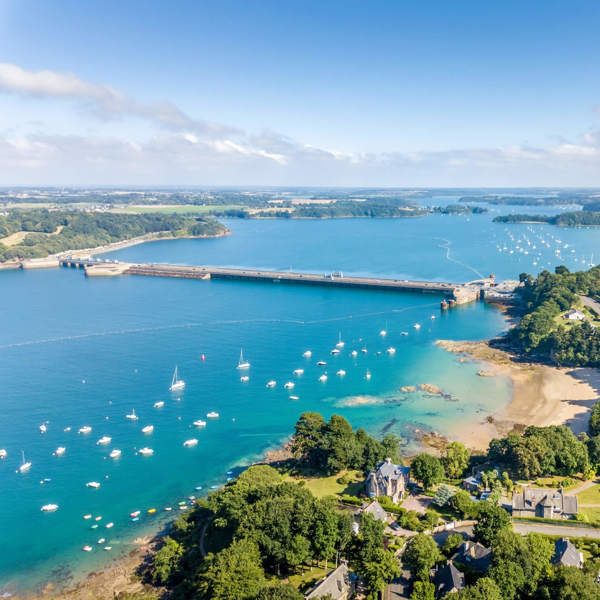
We could be a testbed in future
Despite the current limitations, we believe that tidal power will one day play a part in Jersey’s energy mix. We will, therefore, continue to analyse and explore advances in tidal power technologies and work with Government to provide the capital, expertise and grid infrastructure to test its future feasibility.
In the meantime, we are forging ahead with bringing as much solar PV onto the grid as possible to answer the call for more significant generation from on-Island renewables.
We are also testing the latest demand-side management and storage technologies, including EV battery storage. This supplements the 2020 completion of Jersey’s £11m Smart Metering project.
Smart Meters are an essential foundation for a future smart grid to enable a fully connected, technologically advanced, carbon-neutral Jersey.



Have a question about Tidal Power?
Join the conversation on our Facebook page.


